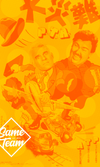If everything feels broken, it probably isn’t.
But it’s easy to think that way. Especially when things aren’t clicking—when momentum’s gone flat, trust is wearing thin, and every week brings a new fire to put out. Leaders start to get that itch: Maybe we need a big change. A re-org. A new leader. A fresh start.
The impulse is understandable. When you’ve tried small tweaks and nothing’s working, blowing it up starts to feel like the only option.
But most teams don’t need a reset. They need a system.
They need something that connects the dots between the meetings you’re holding, the tools you’re using, the decisions you’re making—and how your people are actually experiencing all of it. Because the issue usually isn’t your strategy. It’s how the team is working together (or not) to carry it out.
We’ve seen this play out again and again.
A department head spends months rewriting org charts and revising roles, only to watch confusion and frustration resurface within weeks. A founder brings in an outside coach to “turn things around,” but morale keeps slipping. A team starts using OKRs, but deadlines still drift and ownership stays murky.
It’s not because the people are wrong. It’s because the structure isn’t working.
That’s why we built the Teamangle Diagnostic—not as a replacement for leadership, but as a tool to help leaders see clearly before they overcorrect.
The diagnostic doesn’t offer platitudes. It shows where your team is aligned—and where they’re quietly compensating for gaps across:
- Communication: Are priorities actually clear, or just assumed?
- Collaboration: Is work flowing smoothly, or getting stalled in handoffs and unclear decisions?
- Culture: Are people feeling supported and heard, or just treading water?
One leadership team we worked with came in hot—ready to overhaul their entire product operating model. They were sure the team had grown complacent. But when we ran the diagnostic, the problem wasn’t ambition—it was friction. Communication was ad hoc. Roles had drifted over time. Critical expectations hadn’t been made explicit since the last re-org.
They didn’t need a new system. They needed to use the one they had—on purpose.
So we mapped the friction, tightened the handoffs, reset collaboration practices, and re-established the right communication rhythms. Within six weeks, momentum was back—and the dramatic reset plan was shelved.
That’s the power of diagnosing before detonating. You stop treating symptoms and start fixing systems.
Here’s the pattern:
- Most dysfunction stems from vague roles, unclear expectations, and fractured communication.
- Most culture issues are really structure issues.
- Most misalignment can be mapped, not guessed at.
T L ; D R — If you’re ready to scrap everything, pause. You probably don’t need a total reset—you need visibility into what’s actually breaking down. The Teamangle Diagnostic helps you spot structural misalignment across communication, collaboration, and culture, so you can lead forward with clarity instead of starting from scratch. Don’t bulldoze. Diagnose.






